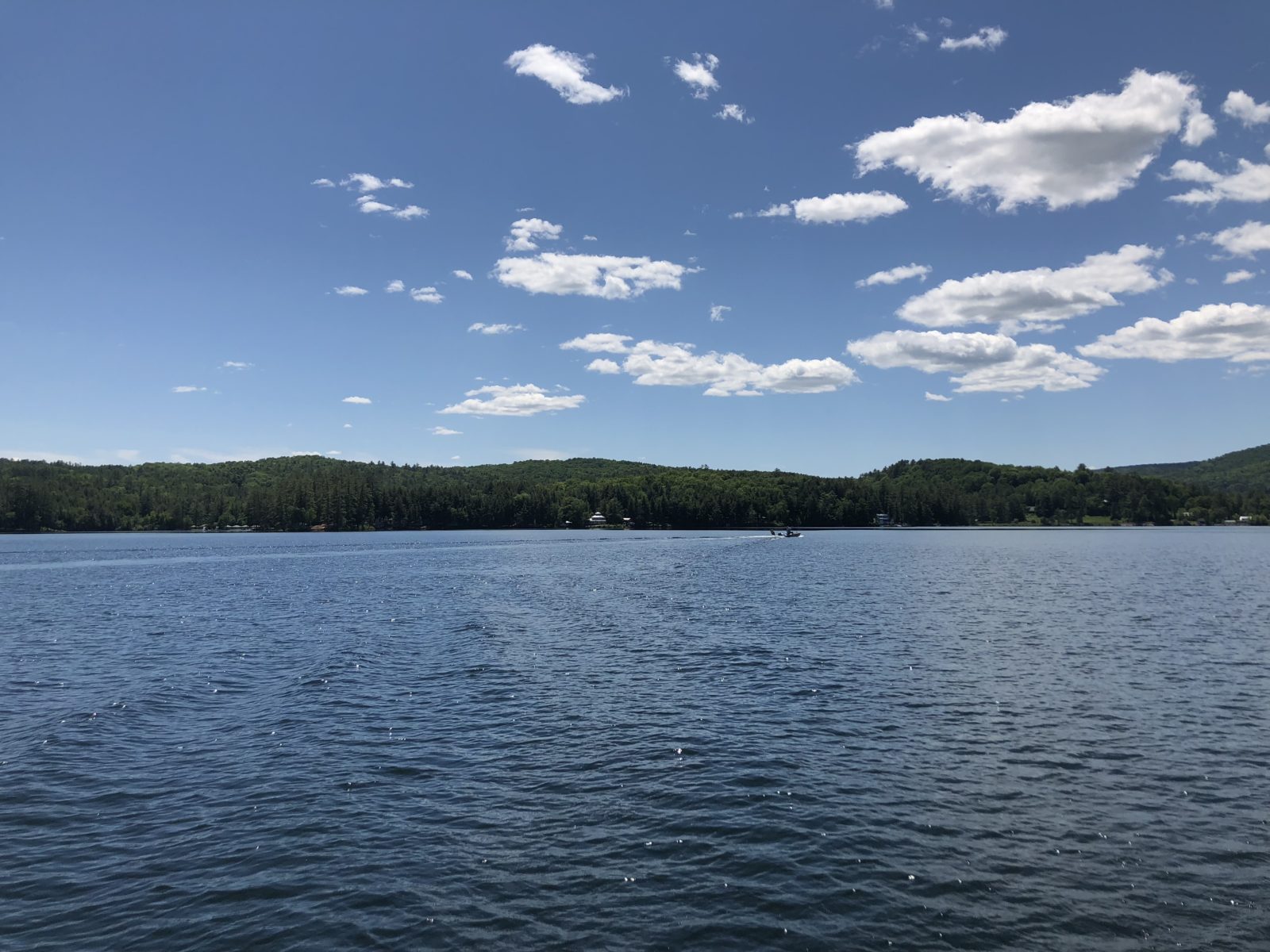
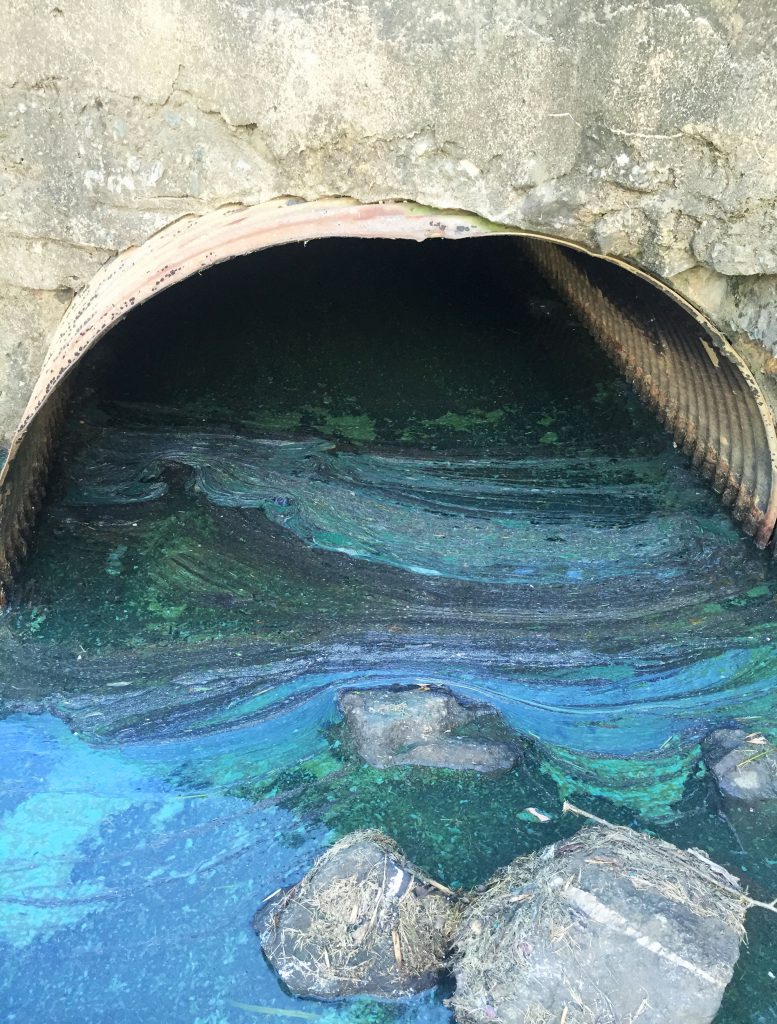
Site Description
Location: Harwich, MA
Located in Harwich, MA, this waterbody serves as an ecological, agricultural, and recreational asset to the area. This 174-acre kettle pond is unlike many in the Cape Cod region. It’s relatively shallow in comparison to others, boasting a maximum depth of 28 ft and a mean depth of 13 ft. This pond has supported cranberry farming for roughly 150 years and is an important spawning habitat for Alewife (a small fish species that migrates between fresh and saltwater). In recent decades, the pond has also experienced significant residential development along the shoreline.
Over the years, phosphorus levels have become excessive in the water resource. The presence of the Alewife, loads from two nearby ponds, stormwater runoff, and runoff from the cranberry bog have all contributed to the eutrophication taking place. As a result, this waterbody has experienced a number of severe cyanobacteria blooms, which have deteriorated the water quality and impaired many of the pond’s uses. Two of the most notable algal blooms occurred in June of both 2009 and 2019. Plans for the management of the pond had been in the works following the algae bloom in 2009. After finally clearing various funding and regulatory hurdles, the restoration work was scheduled for the Fall of 2019.
Scope of Work
Aluminum sulfate application to help reduce cyanobacteria blooms.
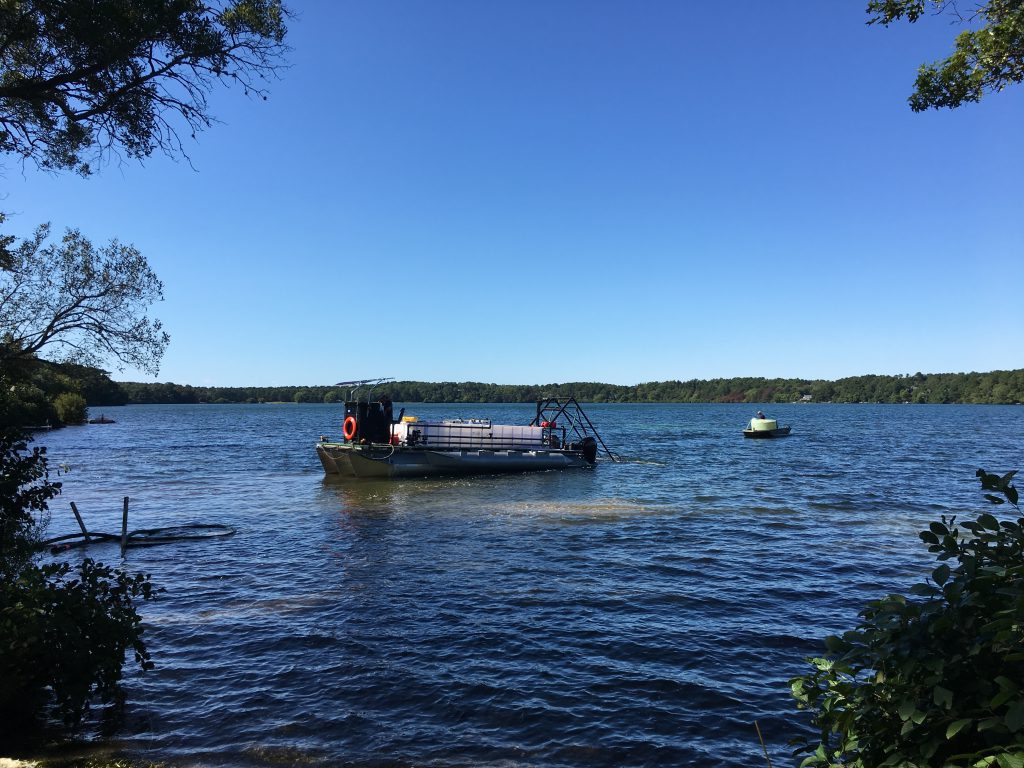
Project Description
Phosphorus inactivation by means of alum treatment was determined to be the most advantageous method for removing phosphorus from the water and inactivating phosphorus in the sediment. Alum treatments have been extremely successful in other regional waterbodies, including at a nearby pond, which was treated in 2007 and flows directly into this waterbody. This option was also the most plausible based on budgetary, environmental, and management constraints, among other factors, to establish long-term control. Ultimately, this decision was based on the results of an evaluation of the pond conducted by Dr. Ken Wagner of Water Resource Services (WRS). WRS was contracted by SOLitude to conduct the monitoring program surrounding the alum application.
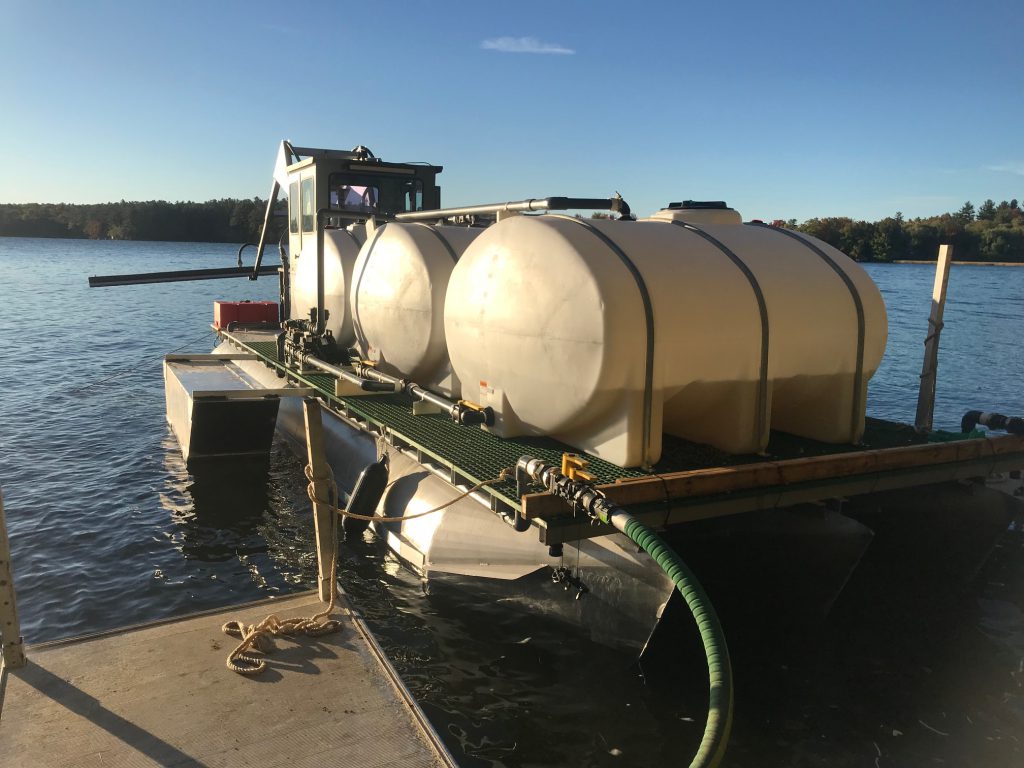
Alum treatment utilizes two compounds, aluminum sulfate (alum) and sodium aluminate. When combined at a 2:1 ratio, they maintain a neutral pH. Upon application, the aluminum contained in both products reacts with the water, to form an insoluble floc which binds with phosphorus and removes suspended particles as it settles to the bottom. Once at the bottom, this environmentally-friendly alum floc also works to inactivate available phosphorus in the sediments, helping to reduce occurrences of algae blooms moving forward.
This project utilized our custom-designed alum barge outfitted with onboard containment for the aluminum compounds, calibrated application system, and twin outboard motors. Treatment areas were delineated with GIS in advance using the project specifications and then downloaded to the onboard GPS unit which then was used to pilot the vessel during treatment to ensure complete coverage. The 2:1 ratio of aluminum compounds were then pumped separately to a submerged boom system which applied both chemicals below the surface.
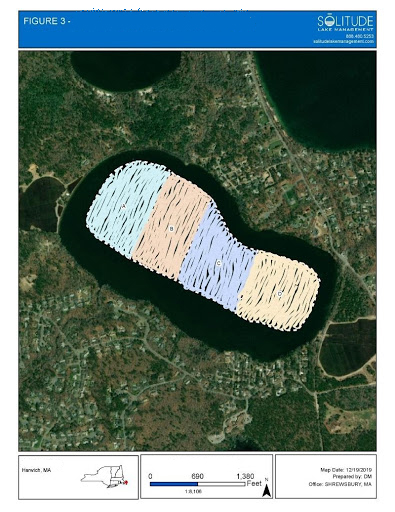
Over the course of two weeks, a total of 90 acres of the pond was treated with aluminum compounds. The treatment area was divided into four sectors, each of which received four staggered doses. This was done to help maintain balanced water chemistry and protect organisms present in the treatment area. Water quality conditions, including pH, water clarity, and other parameters were closely monitored throughout treatment.
The application and monitoring occurred without incident in a timely manner, allowing passive recreational activities to resume for the remainder of the season. Immediate improvements in water clarity were observed early on and continued to improve throughout the treatment. Post-treatment monitoring occurred shortly after the application was completed and site equipment was removed. Many years of improved water quality are anticipated following this successful alum application.









